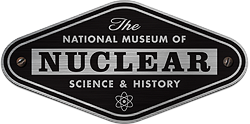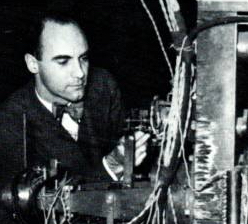Carl David Anderson (1905-1991) was a Nobel Prize-winning American physicist.
Scientific Contributions
Born in New York City to Swedish immigrants, Anderson and his family moved to California when he was a child. He graduated from the California Institute of Technology (Caltech) with a degree in physics engineering in 1927. He received his Ph.D. from Caltech in 1930, studying under Robert A. Millikan. Anderson remained at Caltech as a research fellow, studying cosmic rays. In 1932, he discovered the positron, a particle he described as “carrying a positive charge but having a mass of the same order of magnitude as that normally possessed by a free negative electron.”
The positron was the first antiparticle to be identified. Anderson was only 31 years old when he was awarded the 1936 Nobel Prize in Physics for this discovery. Also in 1936, Anderson and future Manhattan Project physicist Seth Neddermeyer co-discovered the muon or mu meson, a subatomic particle with a mass in between that of electrons and protons.
Anderson did not work on the Manhattan Project. In 1942, Arthur H. Compton contacted Anderson about the possibility of heading the atomic bomb project headquartered at the University of Chicago, with J. Robert Oppenheimer as his assistant. Anderson declined, citing financial reasons, his lack of administrative experience, and the need to take care of his ailing mother. Instead, Anderson helped develop rockets at Caltech during World War II, and traveled to Europe to observe the rockets in action after the Allied landing in Normandy.
Later Years
In the early years of the Cold War, Anderson joined other Physics Department colleagues in signing a petition against hydrogen bomb testing. He continued teaching at Caltech until his retirement in 1970. In addition to his Nobel Prize, he received many other awards and honors, including several honorary degrees, and was elected to the National Academy of Sciences. Anderson died on January 11, 1991, at the age of 85.
For more on Anderson’s life and accomplishments, see the biographical memoir by the National Academy of Sciences.





